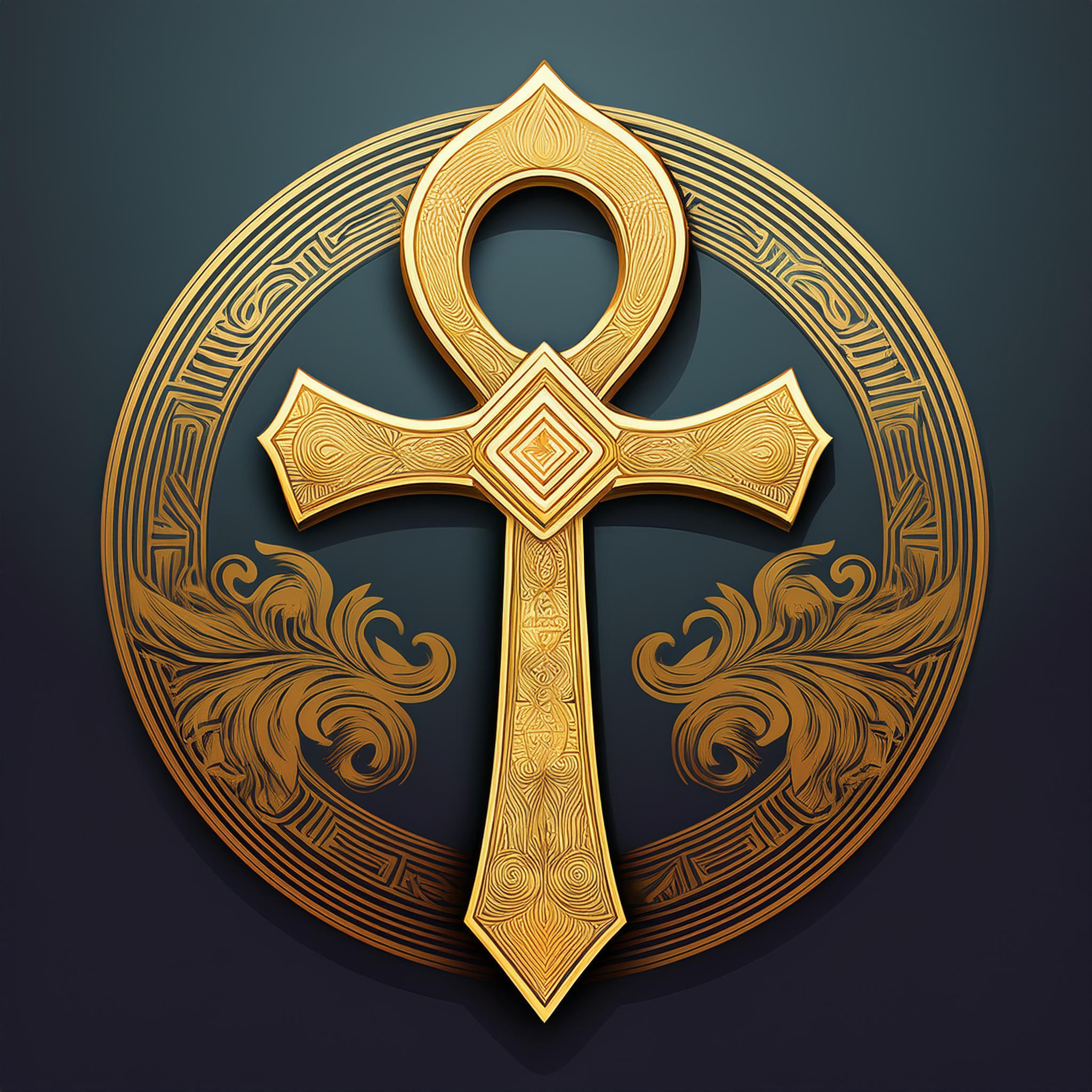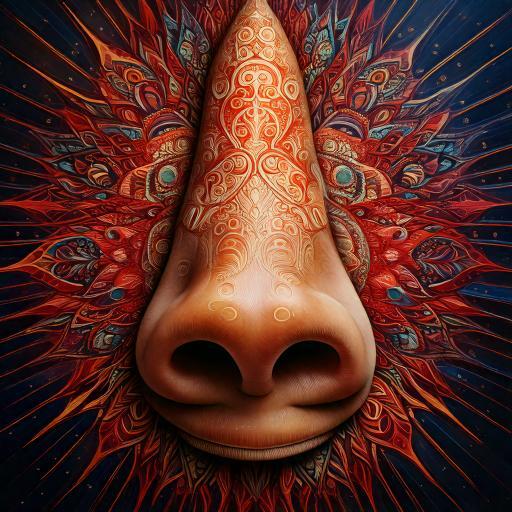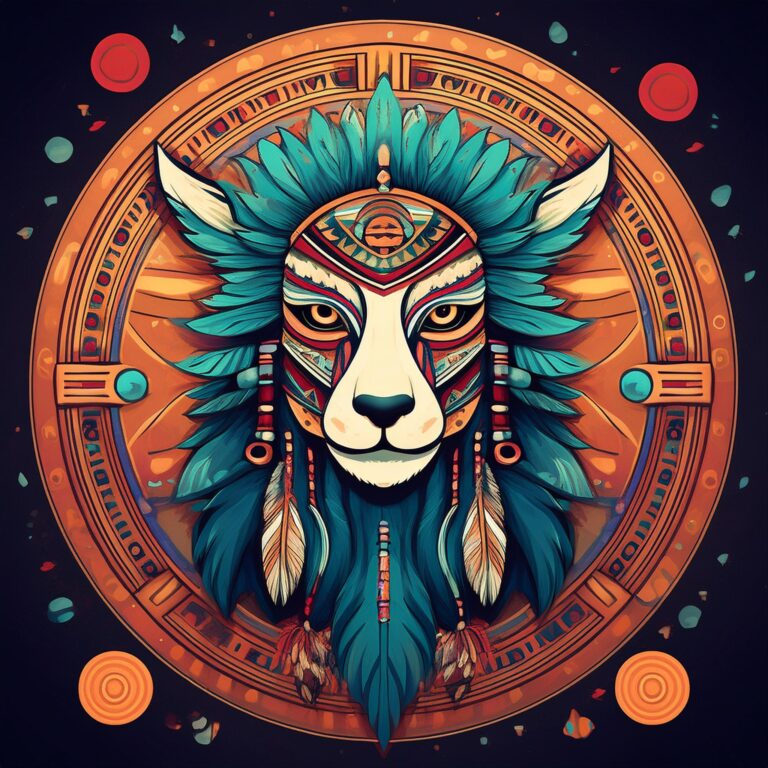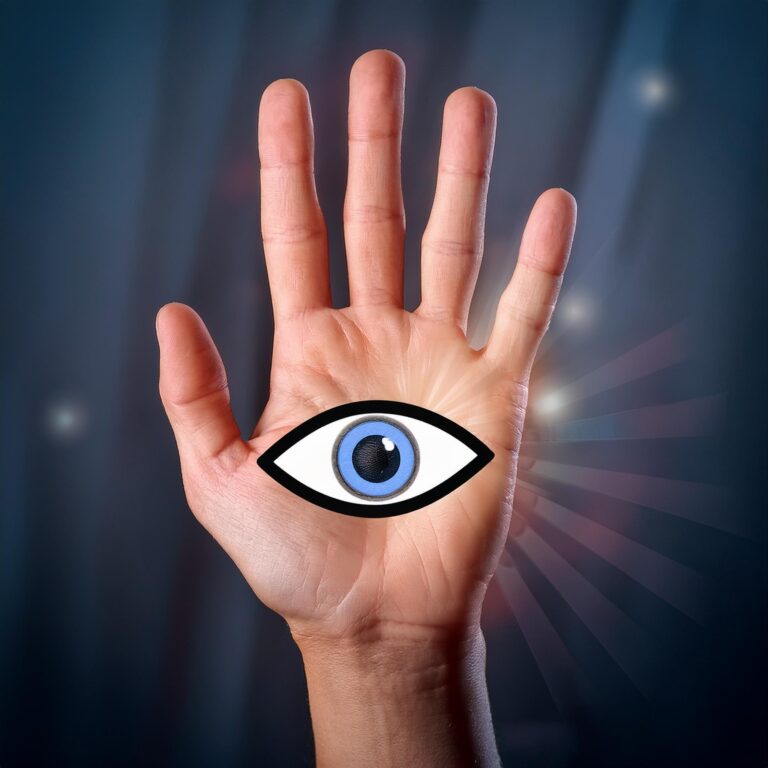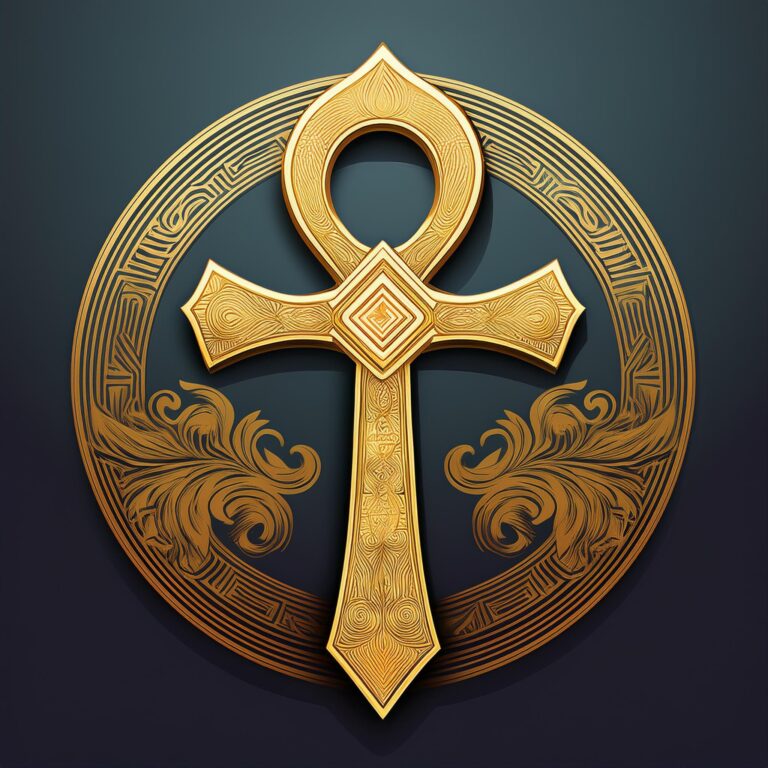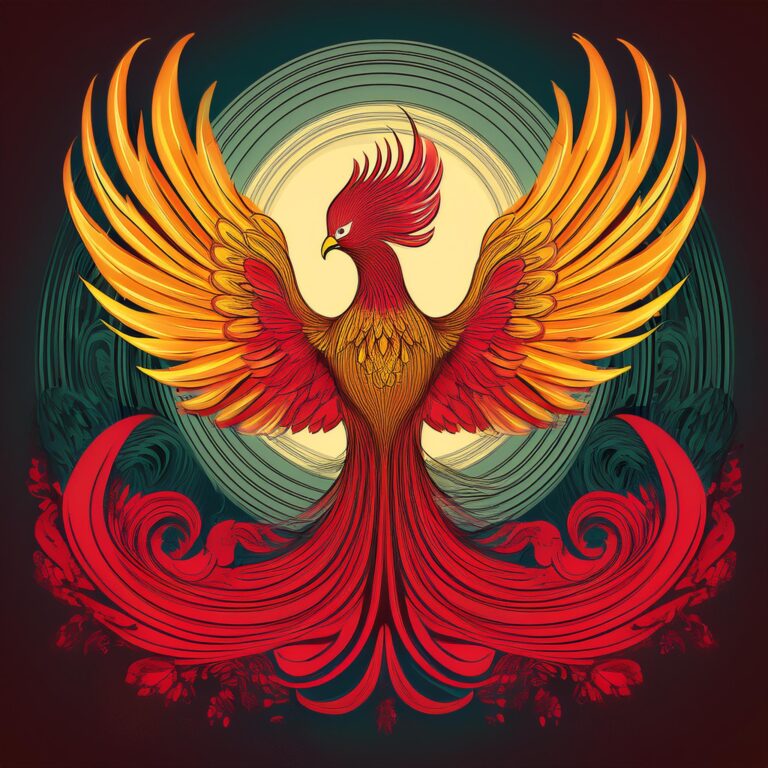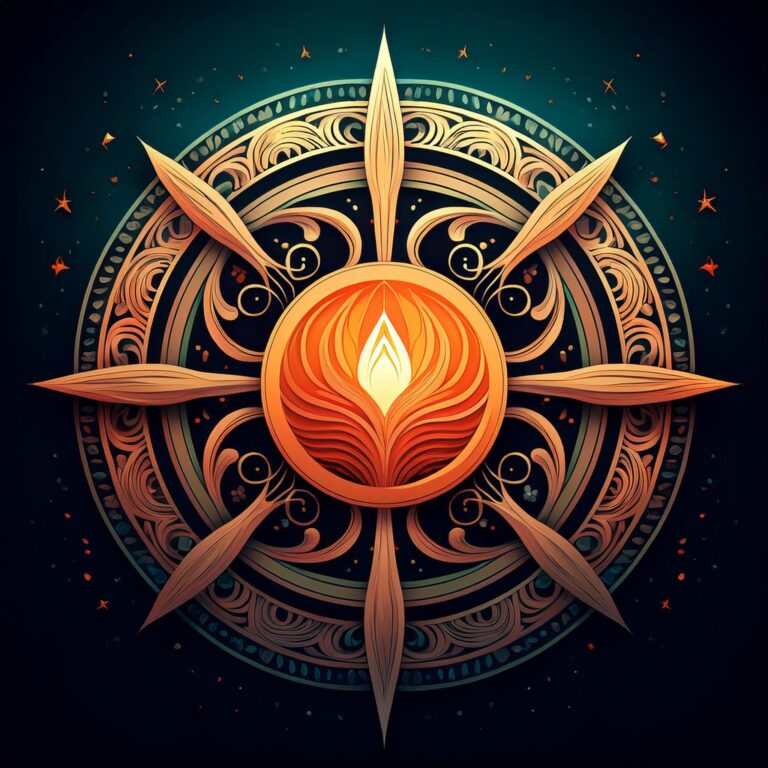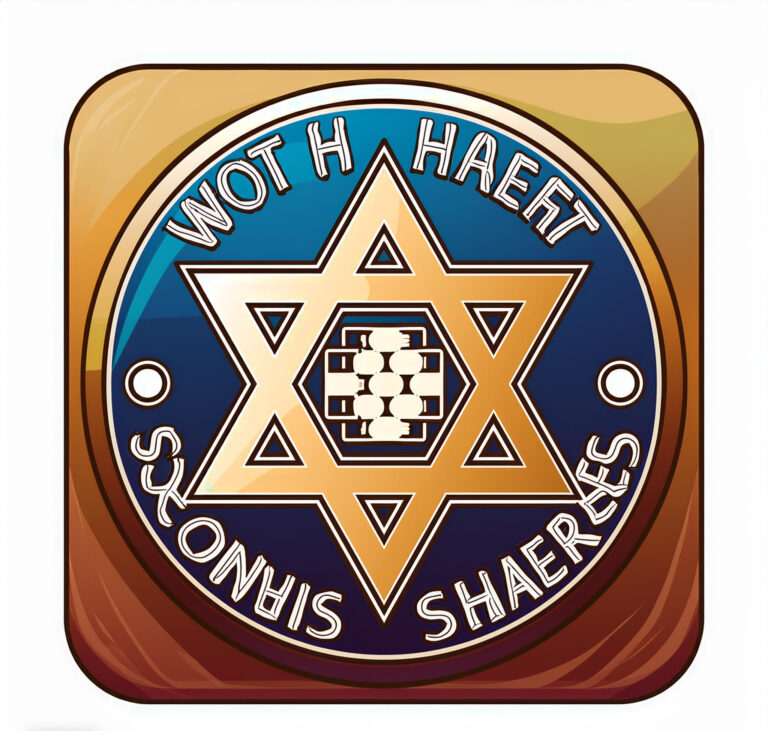The ankh, one of the most recognizable symbols from ancient Egypt, carries a profound meaning that transcends time and culture. Often referred to as the “key of life” or “cross of life,” the ankh is a powerful emblem that represents life, immortality, and the universe’s eternal cycle.
At its core, the ankh symbolizes life, not just in the physical sense but also in the spiritual and eternal realms. In ancient Egyptian culture, the ankh was believed to bestow the gift of life upon the pharaohs and gods, symbolizing their eternal existence. It was often depicted in the hands of deities, who were shown offering it to kings as a gesture of divine protection and a promise of everlasting life.
The ankh’s shape, resembling a cross with a loop at the top, has led many to interpret it as a symbol of the union between male and female principles, with the vertical line representing the masculine and the loop symbolizing the feminine. This union was seen as essential for the creation of life, further reinforcing the ankh’s association with vitality and regeneration.
In addition to its role in ancient Egyptian religion and mythology, the ankh also held significant importance in funerary practices. It was commonly placed in tombs, ensuring safe passage into the afterlife and offering protection against the perils of the underworld. The ankh was more than just a symbol; it was a potent talisman that provided spiritual guidance and sustenance beyond death.
As time passed, the ankh evolved beyond its origins, finding a place in modern symbolism as a representation of life, energy, and spiritual awareness. Today, it is embraced by various cultures and spiritual traditions around the world, often worn as a symbol of protection, inner strength, and a reminder of life’s sacredness.
The Origins of the Ankh Symbol
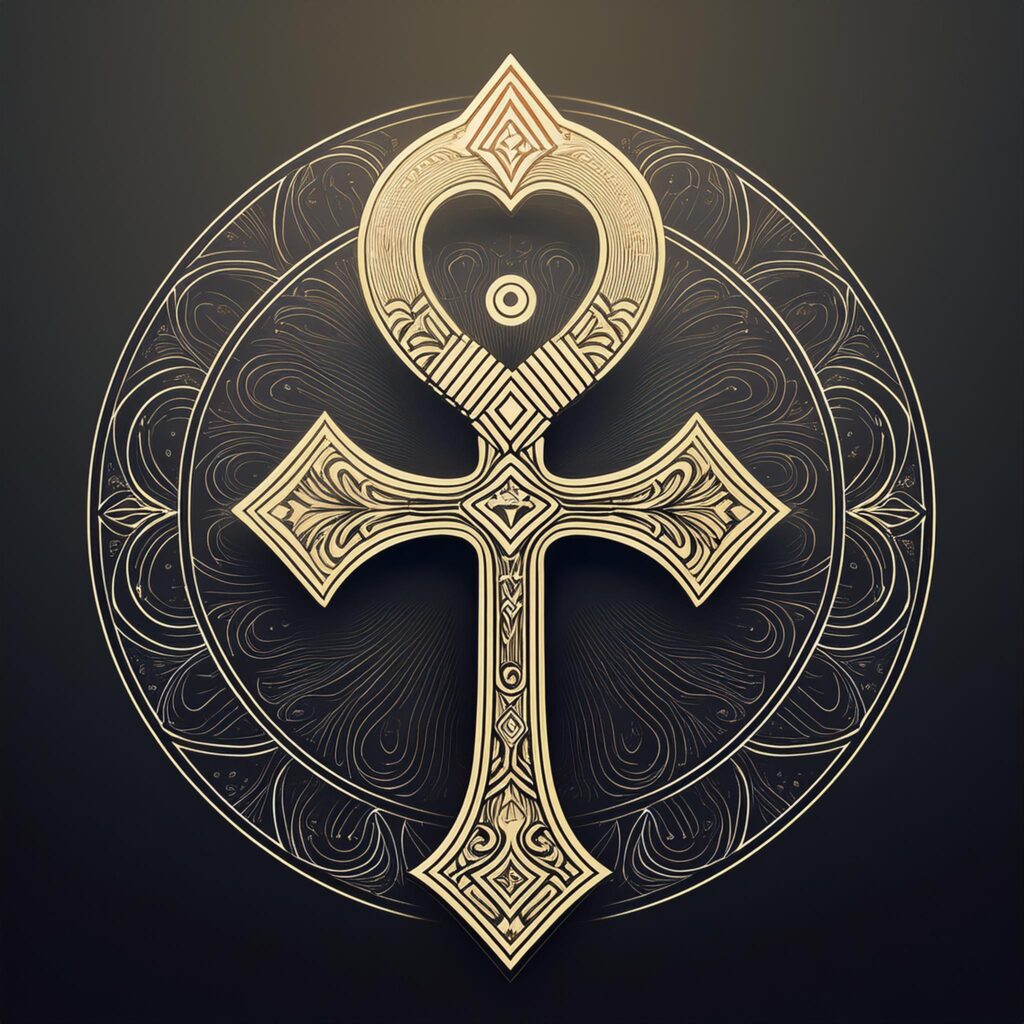
The origins of the ankh symbol are deeply rooted in the ancient civilization of Egypt, where it emerged as a powerful and enigmatic emblem thousands of years ago. The exact origins of the ankh remain shrouded in mystery, but scholars and Egyptologists have proposed several theories regarding its development and significance.
In addition to the ankh, another symbol with deep cultural and spiritual meaning is the hand with an eye, often referred to as the Hamsa. When considering what does a hand with an eye mean, it is seen as a protective talisman, believed to ward off evil and offer blessings, strength, and protection. The hand with an eye, like the ankh, transcends its historical origins to convey a broader message of safeguarding life and providing hope in the face of uncertainty.
One prevalent theory suggests that the ankh represents the union of male and female principles, symbolizing the creation of life. The vertical line of the ankh is thought to represent the masculine aspect, often associated with the sun or the sky, while the loop at the top symbolizes the feminine aspect, linked to the womb or the Earth. This interpretation aligns with the Egyptian belief in the harmonious balance between opposites, which was essential for the continuation of life and the cosmos.
Another theory points to the ankh as a stylized depiction of a sandal strap, which was a practical item in daily Egyptian life. The loop would represent the strap itself, while the horizontal and vertical lines symbolize the thong and the sole. In this context, the ankh might have symbolized the idea of walking through life, with the journey itself being sacred and guided by divine forces.
The ankh’s significance is also closely tied to Egyptian mythology and the gods themselves. It was often depicted in the hands of gods and goddesses, particularly those associated with life and fertility, such as Isis and Osiris. In this way, the ankh became a symbol not just of life, but of divine protection and the promise of eternal life in the afterworld.
In funerary art, the ankh was a prominent symbol, appearing in tombs, sarcophagi, and other burial objects. The Egyptians believed that the ankh would provide the deceased with the breath of life necessary to sustain them in the afterlife. This usage underscores the ankh’s role as a bridge between the mortal world and the eternal, reinforcing its association with both physical and spiritual life.
Despite the many interpretations and theories surrounding its origins, the ankh remains a symbol of profound mystery and significance. Its enduring presence in Egyptian art and culture is a testament to its importance as a representation of life, immortality, and the divine forces that govern the universe.
The Ankh in Ancient Egyptian Culture
In ancient Egyptian culture, the ankh held a place of unparalleled importance, symbolizing the essence of life itself. This iconic symbol permeated nearly every aspect of Egyptian society, from religious practices and art to daily life and funerary customs.
The ankh was closely associated with the gods, who were often depicted holding it in their hands. In many representations, deities like Ra, the sun god, and Isis, the goddess of magic and life, are shown offering the ankh to pharaohs, signifying the divine gift of life and the power to rule. This symbolic act was not just a blessing of earthly life but also an assurance of eternal life in the afterworld.
The ankh was also a prominent symbol in Egyptian art and iconography. It appeared frequently in wall paintings, carvings, and hieroglyphs, symbolizing life and immortality. In many depictions, the ankh was placed in the center of important scenes, such as those depicting the afterlife, rituals, and interactions between gods and humans. Its ubiquitous presence reinforced the belief that life, both in this world and the next, was a divine gift that could only be sustained by the gods.
In addition to its religious significance, the ankh was used in everyday objects and amulets. Many Egyptians wore the ankh as a talisman, believing it would provide them with protection, good health, and longevity. Amulets in the shape of the ankh were commonly placed on mummies, ensuring that the deceased would be granted eternal life and safe passage through the afterlife. These practices highlight the ankh’s role as a powerful symbol of protection and a link between the earthly and the divine.
The ankh’s influence extended to Egyptian architecture as well. The shape of the ankh is thought to have inspired the design of the ancient Egyptian key, known as the “ankh-key,” which was used in various ceremonies and rituals. Some scholars even suggest that the ankh’s form may have influenced the architecture of temples and tombs, where its symbolism would have been a constant reminder of the sacredness of life and the promise of eternal existence.
Overall, the ankh was far more than just a symbol in ancient Egyptian culture—it was a representation of the life force itself, a bridge between the mortal and the divine, and a guarantee of immortality. Its enduring presence throughout Egyptian history is a testament to the profound significance it held for the people of that ancient civilization.
Ankh as a Symbol of Life
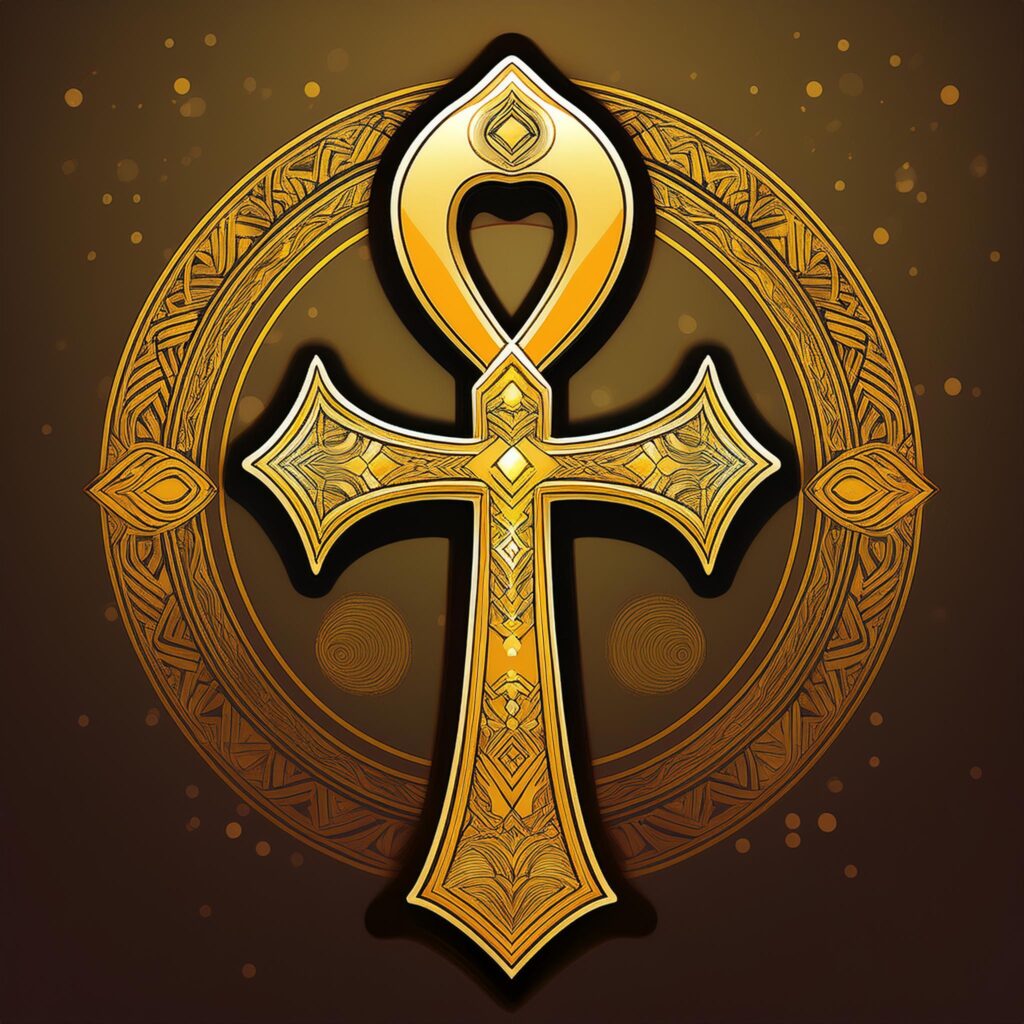
The ankh, often referred to as the “key of life,” is one of the most enduring symbols of life in both ancient and modern contexts. In ancient Egyptian culture, the ankh was more than just a symbol; it was a potent representation of the vital force that sustains all living beings and the promise of eternal existence.
At its most fundamental level, the ankh symbolizes life itself. The ancient Egyptians believed that the ankh held the power to grant and preserve life, making it a crucial element in their understanding of existence. This belief is reflected in the way the ankh was depicted in Egyptian art and iconography. Deities are frequently shown holding the ankh, offering it to pharaohs and other individuals as a sign of divine favor and the bestowal of life. The ankh in these depictions is often placed near the nose or mouth, symbolizing the “breath of life” that sustains the soul.
The ankh’s shape is also imbued with symbolic meaning. The loop at the top is thought to represent the sun rising on the horizon, a powerful image of renewal and the cyclical nature of life. The vertical line beneath the loop is often interpreted as a symbol of the path of life, connecting the heavens with the earth, while the horizontal line represents the union of male and female, reflecting the balance necessary for creation and the perpetuation of life.
In addition to representing physical life, the ankh also symbolized the concept of eternal life. The ancient Egyptians believed that life did not end with death but continued in the afterlife, where the soul would live on forever. The ankh was a key symbol in this belief, often depicted in funerary art and placed in tombs to ensure the deceased’s safe passage and continued existence in the next world. By holding the ankh, the gods were seen as providing protection and the assurance of immortality to the soul.
The ankh’s association with life extended beyond the mortal realm, embodying the idea of spiritual life as well. It was a symbol of the eternal, unbreakable cycle of life, death, and rebirth—a core concept in Egyptian spirituality. The ankh was often used in rituals and ceremonies that celebrated life and sought to maintain the balance between the physical and spiritual worlds.
Today, the ankh continues to be a powerful symbol of life, often worn as a talisman or used in art and jewelry. Its timeless association with vitality, protection, and eternal existence ensures its relevance across cultures and spiritual practices. The ankh’s enduring legacy as a symbol of life is a testament to its profound and universal significance.
The Ankh in Modern Symbolism
The ankh, an ancient symbol steeped in thousands of years of history, has transcended its origins in Egyptian culture to become a powerful emblem in modern symbolism. Today, the ankh is not only a representation of life and immortality but also a symbol embraced by various spiritual movements, artistic expressions, and cultural practices around the world.
In contemporary spirituality, the ankh has found a place among those who seek to connect with ancient wisdom and the energies of life. It is often used as a symbol of spiritual enlightenment, representing the connection between the physical and spiritual realms. For many, the ankh is a reminder of the eternal cycle of life, death, and rebirth, making it a popular symbol in practices that emphasize personal growth, transformation, and the quest for higher consciousness.
The ankh has also been adopted by the Afrocentric movement as a symbol of African heritage and pride. In this context, it serves as a powerful reminder of the rich cultural and spiritual legacy of ancient Egypt, often regarded as one of the cornerstones of African civilization. The ankh is frequently worn as jewelry or used in art and fashion as a way to honor this heritage and express a connection to the African diaspora.
In the realm of pop culture, the ankh has appeared in various forms, from fashion to music to visual art. Its distinctive shape and profound meaning have made it a favorite among artists and designers who wish to convey themes of life, eternity, and spiritual resilience. Musicians and celebrities have also popularized the ankh as a symbol of individuality and a connection to ancient traditions, often wearing it as a statement piece in performances and public appearances.
The ankh’s resurgence in modern symbolism can also be seen in its use in alternative and New Age spiritual practices. Here, it is often associated with healing, protection, and the balance of energies. Many believe that the ankh possesses metaphysical properties, capable of channeling positive energy and promoting harmony in both the physical and spiritual aspects of life. It is common to find the ankh incorporated into meditation practices, energy healing sessions, and sacred rituals aimed at restoring balance and vitality.
Moreover, the ankh has become a universal symbol of life, transcending its cultural origins to resonate with people of diverse backgrounds and beliefs. Its timeless association with vitality, renewal, and the eternal nature of existence ensures its relevance in a world where the search for meaning and connection is ever-present.
The ankh’s enduring presence in modern symbolism is a testament to its powerful and adaptable nature. Whether worn as a piece of jewelry, used in spiritual practices, or embraced as a cultural emblem, the ankh continues to inspire and resonate, carrying forward its ancient message of life and immortality into the modern age.
The Ankh in Religion and Spirituality
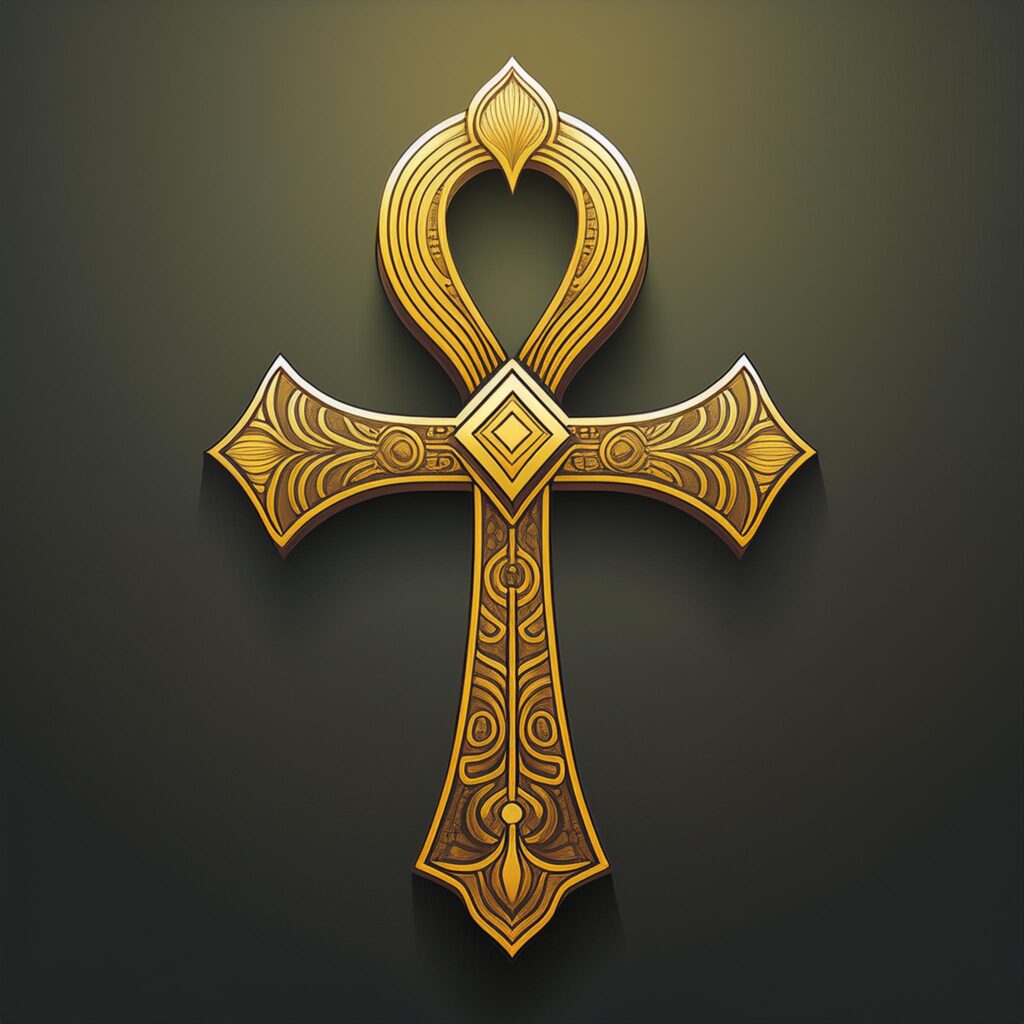
The ankh has long been revered not only as a cultural icon but also as a deeply spiritual symbol that carries significant religious meaning. In both ancient and modern contexts, the ankh serves as a bridge between the earthly and the divine, embodying concepts of life, immortality, and spiritual connection.
In ancient Egyptian religion, the ankh was intimately connected with the gods and goddesses, who were believed to control the forces of life and death. The ankh was often depicted in the hands of deities such as Ra, the sun god, and Isis, the goddess of life and magic. These deities were shown offering the ankh to pharaohs and other important figures, symbolizing the granting of life, both in the present world and in the afterlife. The ankh, in this context, was more than just a symbol; it was a divine tool that bestowed the gift of eternal life and spiritual protection.
The association of the ankh with the afterlife was particularly strong. Ancient Egyptians believed that life did not end with death but continued in another realm. The ankh was a key symbol in their funerary practices, often placed in tombs and on sarcophagi to ensure that the deceased would be reborn into the afterlife. This belief in the ankh as a symbol of life beyond death made it central to Egyptian religious rituals and a powerful emblem of their faith in the eternal soul.
In addition to its ancient origins, the ankh has been embraced in various modern spiritual movements, particularly within New Age and alternative religious practices. In these contexts, the ankh is often seen as a symbol of universal life force and spiritual awakening. It represents the interconnectedness of all life and the continuous cycle of birth, death, and rebirth. Many people who practice these spiritual traditions use the ankh as a talisman or meditative focus, believing it helps channel positive energy and fosters spiritual growth.
The ankh’s spiritual significance also extends to its symbolic representation of the balance between opposites, such as life and death, male and female, and heaven and earth. This duality is a common theme in many religious and spiritual traditions, where the ankh serves as a reminder of the need to harmonize these opposing forces to achieve spiritual enlightenment. Its form, combining a straight line and a loop, is often interpreted as the union of masculine and feminine energies, reflecting the holistic nature of existence.
Furthermore, the ankh has been adopted by some Christian communities, particularly in the Coptic Church, where it is known as the “Coptic cross.” In this context, the ankh symbolizes eternal life through Christ and serves as a bridge between ancient Egyptian spirituality and Christian faith. The Coptic cross is a powerful symbol of continuity, linking the spiritual heritage of ancient Egypt with the Christian tradition.
Overall, the ankh remains a profound spiritual symbol that transcends its ancient origins. Its rich associations with life, death, and the divine continue to inspire those who seek deeper spiritual meaning and a connection to the eternal mysteries of existence.
Ankh in Art and Jewelry
The ankh has transcended its origins as an ancient Egyptian symbol to become a timeless motif in art and jewelry. Its distinctive shape and profound meaning have made it a popular choice for artisans and designers across cultures and generations. Whether as a decorative element or a piece of personal adornment, the ankh continues to inspire and captivate with its elegant form and deep symbolism.
In ancient Egypt, the ankh was frequently depicted in art, often held by gods and pharaohs as a symbol of life and divine protection. These depictions appeared on temple walls, tombs, and other sacred spaces, reinforcing the ankh’s connection to both earthly and spiritual life. The simplicity and elegance of the ankh’s design—a looped cross with a long vertical shaft—made it a versatile element in Egyptian art, used in everything from grand murals to delicate carvings on personal items.
The ankh’s role in jewelry dates back to ancient times as well. Egyptians wore ankhs as amulets, believing they provided protection, health, and longevity. Crafted from a variety of materials, including gold, silver, and precious stones, these amulets were often buried with the deceased to ensure safe passage into the afterlife. The ankh was not only a symbol of life but also a powerful talisman believed to carry the divine energy necessary for the soul’s journey beyond death.
In modern times, the ankh has remained a popular motif in jewelry design, often embraced by those who appreciate its historical significance and aesthetic appeal. Contemporary jewelers create ankh-inspired pieces in a wide range of styles, from traditional designs that echo ancient Egyptian aesthetics to more minimalist and abstract interpretations. The ankh is commonly seen in necklaces, earrings, bracelets, and rings, each piece carrying the symbol’s rich heritage and spiritual meaning.
The versatility of the ankh allows it to be worn by people of diverse backgrounds, each finding personal significance in its form. For some, wearing an ankh is a way to connect with ancient Egyptian culture and its emphasis on life, immortality, and the divine. For others, the ankh serves as a symbol of spiritual awakening, protection, or a reminder of the eternal cycle of life and rebirth. The ankh’s appeal is also rooted in its ability to convey a sense of mystery and timelessness, making it a powerful symbol for those who seek to express their individuality and beliefs through their adornments.
Artists, too, have been drawn to the ankh for its symbolic richness and visual impact. The ankh appears in a variety of artistic mediums, from paintings and sculptures to graphic design and digital art. In these works, the ankh often symbolizes concepts of life, eternity, and the interconnectedness of all things. Its iconic form, easily recognizable and laden with meaning, allows artists to explore themes of spirituality, history, and identity in their creations.
In the world of fashion, the ankh has also made its mark, often appearing as a statement piece that combines cultural heritage with contemporary style. Fashion designers and brands have incorporated the ankh into clothing, accessories, and even high-fashion collections, using its potent symbolism to create pieces that resonate with modern audiences while paying homage to its ancient roots.
Ultimately, the ankh’s presence in art and jewelry is a testament to its enduring power as a symbol. Its ability to bridge the ancient and the modern, the physical and the spiritual, ensures that the ankh will continue to inspire creativity and convey meaning for generations to come.
The Cultural Impact of the Ankh
The ankh is more than just an ancient symbol; it is a cultural icon that has had a profound and lasting impact across diverse societies and eras. Its journey from the temples and tombs of ancient Egypt to its widespread recognition in modern times illustrates the enduring power of this symbol and its ability to resonate with people across cultures and belief systems.
In ancient Egypt, the ankh was a ubiquitous symbol, representing life, immortality, and the divine connection between the gods and humanity. Its significance was not confined to religious and funerary contexts; the ankh was also a part of everyday life, seen in amulets, jewelry, and art. The prominence of the ankh in Egyptian culture established it as one of the most recognizable symbols of that civilization, embodying their beliefs about life, death, and the afterlife.
As time passed and cultures intermingled, the ankh began to transcend its Egyptian origins. During the Hellenistic period, when Greek and Egyptian cultures merged, the ankh was integrated into Greco-Roman iconography. Its shape was adapted into the Coptic cross, a symbol of the Coptic Christian Church, which continues to use it as a representation of eternal life through Christ. This adaptation illustrates how the ankh’s symbolism of life and immortality was seamlessly incorporated into new religious contexts, allowing it to persist and evolve.
In the 20th century, the ankh experienced a resurgence as a symbol of African heritage and pride. During the rise of the Afrocentric movement, which sought to reclaim and celebrate African culture, the ankh was embraced as a powerful emblem of African identity. It was prominently featured in art, literature, and fashion, symbolizing the rich history and spiritual legacy of Africa, particularly in connection to ancient Egypt. This period marked the ankh’s transformation into a symbol of cultural empowerment and resistance against colonial narratives.
The ankh has also made significant inroads into popular culture, becoming a symbol with broad appeal and diverse meanings. It has appeared in music, fashion, and media, often as a sign of individuality, spiritual awareness, and connection to ancient wisdom. Celebrities and artists have popularized the ankh by incorporating it into their public personas, whether as jewelry or as a motif in their creative works. This widespread use has cemented the ankh’s place as a symbol of life and continuity that resonates with modern audiences.
Moreover, the ankh’s cultural impact extends to its use in various spiritual movements, particularly those that emphasize universal life force, healing, and balance. It is frequently seen in New Age practices, where it is revered as a symbol of eternal life, spiritual awakening, and the interconnectedness of all beings. This contemporary spiritual significance demonstrates the ankh’s ability to adapt and find relevance in new contexts, ensuring its continued influence.
The ankh’s cultural impact is a testament to its versatility and profound meaning. As a symbol that bridges ancient and modern, spiritual and secular, it continues to inspire, empower, and connect people across the globe. The ankh’s legacy is not just a relic of the past but a living symbol that continues to shape and reflect the values and beliefs of diverse cultures today.
Reader-Requested Symbols Related to the Ankh
As we explore the rich symbolism of the ankh, it’s important to recognize that this ancient emblem is part of a broader tapestry of symbols that share thematic connections to life, immortality, and spiritual power. Our readers have expressed interest in understanding how the ankh relates to other symbols that carry similar meanings, each with its unique cultural and spiritual significance.
One such symbol is the Eye of Horus, another iconic symbol from ancient Egypt. Also known as the “Wadjet,” the Eye of Horus represents protection, health, and restoration. Like the ankh, it was believed to have powerful protective qualities, often used in amulets and artwork to ward off evil and bring healing. The Eye of Horus is frequently depicted alongside the ankh in Egyptian art, reinforcing their shared association with divine power and the preservation of life.
Another related symbol is the Celtic Cross, a symbol that combines the traditional Christian cross with a circular ring surrounding the intersection. The circle in the Celtic Cross, much like the loop in the ankh, is often interpreted as a symbol of eternity and the unbroken cycle of life, death, and rebirth. While rooted in different cultural traditions, both the ankh and the Celtic Cross reflect a deep reverence for the eternal nature of existence and the spiritual journey.
The Ouroboros, an ancient symbol depicting a serpent or dragon eating its own tail, is another reader-requested symbol that shares thematic connections with the ankh. The Ouroboros represents the cyclical nature of life, death, and rebirth, much like the ankh symbolizes the continuation of life beyond death. This symbol, which has appeared in various cultures throughout history, from Egypt to Greece to Norse mythology, emphasizes the interconnectedness of all things and the eternal cycle of existence.
In addition to these symbols, many readers have shown interest in the Phoenix, a mythical bird that is said to rise from its ashes, symbolizing resurrection and renewal. The Phoenix’s story of death and rebirth parallels the ankh’s representation of eternal life, making it a symbol of hope and transformation. Both the Phoenix and the ankh remind us of the possibility of renewal and the enduring nature of the soul.
Finally, the Tree of Life is a symbol that resonates deeply with the themes embodied by the ankh. Found in various religious and cultural traditions, the Tree of Life represents the interconnectedness of all life, growth, and the cycle of birth and rebirth. It is a powerful symbol of life’s resilience and continuity, much like the ankh, which has been revered as a symbol of the life force that sustains all beings.
These reader-requested symbols highlight the diverse ways in which different cultures have expressed similar ideas about life, immortality, and spiritual connection. While each symbol carries its unique cultural context and meaning, their thematic similarities to the ankh show how deeply the concepts of life and eternity resonate across human history.
Symbols Similar to the Ankh
The ankh, with its unique shape and profound meaning, shares similarities with various symbols from different cultures and traditions. These symbols, while distinct in their origins and representations, often convey related themes of life, immortality, spiritual power, and the interconnectedness of existence. Below is a comparison of some of the most notable symbols similar to the ankh, highlighting their origins, meanings, and cultural significance.
| Symbol | Origin | Meaning | Cultural Significance |
|---|---|---|---|
| Cross | Christianity | Represents the crucifixion of Jesus Christ and the resurrection, symbolizing eternal life. | Central to Christian faith, symbolizing sacrifice, redemption, and eternal life through Christ. |
| Eye of Horus | Ancient Egypt | Protection, health, and restoration. | Used as a protective amulet in ancient Egyptian culture, symbolizing healing and protection. |
| Ouroboros | Ancient Egypt, Greece, Norse mythology | The cycle of life, death, and rebirth. | Represents the eternal cycle of life and the interconnectedness of all things. Appears in various ancient cultures. |
| Phoenix | Greek Mythology | Resurrection and renewal. | A symbol of immortality and renewal, representing the idea of rebirth from ashes. |
| Celtic Cross | Celtic Christianity | Combines the Christian cross with a circular ring, symbolizing eternity. | Represents the unity of heaven and earth, life and death, and the eternal cycle. |
| Tree of Life | Various cultures | Interconnectedness of all life, growth, and rebirth. | A universal symbol of life’s resilience, often associated with spirituality, growth, and immortality. |
These symbols, like the ankh, have endured through the ages, each carrying deep spiritual and cultural meanings that resonate with the concept of life, continuity, and the eternal. While they emerge from different traditions, they all reflect humanity’s shared concerns with the mysteries of life and the afterlife, making them fascinating counterparts to the ankh.
FAQ About the Ankh Symbol
The ankh is a symbol rich in history and meaning, and it’s natural for people to have questions about its origins, significance, and use in modern times. Below, we’ve compiled some of the most frequently asked questions about the ankh, providing answers that shed light on this ancient and enduring symbol.
The ankh is primarily known as a symbol of life, immortality, and the union between the earthly and the divine. In ancient Egypt, it was believed to represent the eternal life granted by the gods. The ankh’s shape, which combines a cross with a loop, is thought to symbolize the connection between the physical and spiritual realms.
The ankh originated in ancient Egypt, where it was used extensively in art, religion, and daily life. It was closely associated with the gods, especially those related to life and death, such as Ra and Isis. The ankh was often depicted in the hands of deities, who offered it as a gift of life to pharaohs and other important figures.
While the ankh has strong religious connotations in ancient Egyptian culture, it has also been adopted by other spiritual traditions and modern movements. For example, in Coptic Christianity, the ankh evolved into the Coptic cross, symbolizing eternal life through Christ. In modern times, it is also embraced by New Age spiritual practices as a symbol of universal life force and spiritual awakening.
The ankh remains a popular symbol in modern culture, often appearing in jewelry, fashion, and art. It is frequently used as a symbol of African heritage, spiritual connection, and the cycle of life and death. Many people wear the ankh as a personal talisman, believing it provides protection, balance, and a link to ancient wisdom.
While both the ankh and the Christian cross are symbols of life, they originate from different cultural and religious contexts. The ankh is an ancient Egyptian symbol that represents eternal life and the connection between the physical and spiritual realms. The Christian cross, on the other hand, symbolizes the crucifixion of Jesus Christ and his resurrection, representing salvation and eternal life through Christ.
The ankh has transcended its origins in ancient Egypt and is now widely recognized as a universal symbol. While it is deeply rooted in Egyptian culture, it has been embraced by people from various backgrounds and spiritual traditions. Wearing or using the ankh today is generally seen as a way to connect with its meanings of life, immortality, and spiritual protection, regardless of one’s cultural or religious background.
Yes, there are several symbols in other cultures that share similar meanings with the ankh, such as the Eye of Horus, the Celtic Cross, the Ouroboros, and the Tree of Life. These symbols, like the ankh, often represent life, death, rebirth, and the interconnectedness of all things.
The loop at the top of the ankh is sometimes interpreted as a representation of the womb, which has led to associations with fertility and the female principle. In ancient Egyptian mythology, the ankh was connected to goddesses like Isis, who were central figures in life, birth, and protection, reinforcing its symbolic link to femininity and creation.

I’m the editor at SymbolsSays, where I explore the deeper meanings of symbols in mythology, art, literature, and psychology. My goal is to provide insights into how symbols influence our lives and connect us to our past.
